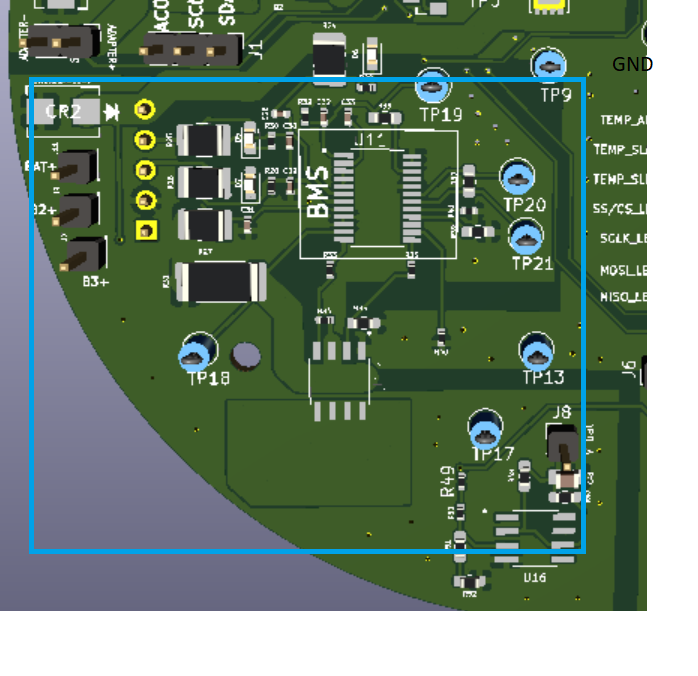Other Parts Discussed in Thread: BQ24715
Hi,
Hope you are doing good.
We have 3s2p configuration Li-ion batteries (ncr18650b). We are using bq77915 IC as BMS in our system. ans bq24715 for our battery charge controller.
We have used bq7791501 part as our BMS.
the battery should be charged upto 12.6V
The battery stopped charging at 12.35V. we checked the CHG anf DSCHG fets and found out that the dischg fet is on where as the chg fet is turned off.
from the data sheet table no 9.5 the conditions for fault might be
- over voltage fault
- over temperature charge fault
- under temperature charge fault.
The battery pack was charging at room temperature. The BP did not reach a temperature of 50 degrees.
coming to over voltage fault condition, we checked the individual cell voltages and measured approx 4.11 V on each cell. which is well within the under voltage range.
We removed the r39 resistor to disable cell balancing condition.
I am attaching the schematic below
We changed the IC to bq7791500 and the sense resistor value to 7.5 mohm
Once we connected the cell balancing after the battery stopped charging, the led's related to cell balancing D5,D7,D6 are glowing.
the battery pack voltage measures 12.29V and the voltage across the cells are 4.1V , 4.09V and 4.08V ( the battery back is connected with the help of J2 where Bat + is connected to pin 5. at pin4 we have B1- and B2+ and at pin 3 we have b2- and b3+. and at pin 4 we have battery pack - connected
We connected load and the fault chgfet turned on and and supplied the load. The battery voltage measured 12.24 V.
i doubt if the condition is over voltage fault condition. but we selected bq7791500 and bq77917501 based on the OV of 4200mV and 4250mV. respectively.
i believe the OV fault condition should occur once the OV threshold is crossed. but we have chgfet off. even when we observe no fault condition.
Can you please help us with this?
Thank-you
Warm regards
Harini Krishna











